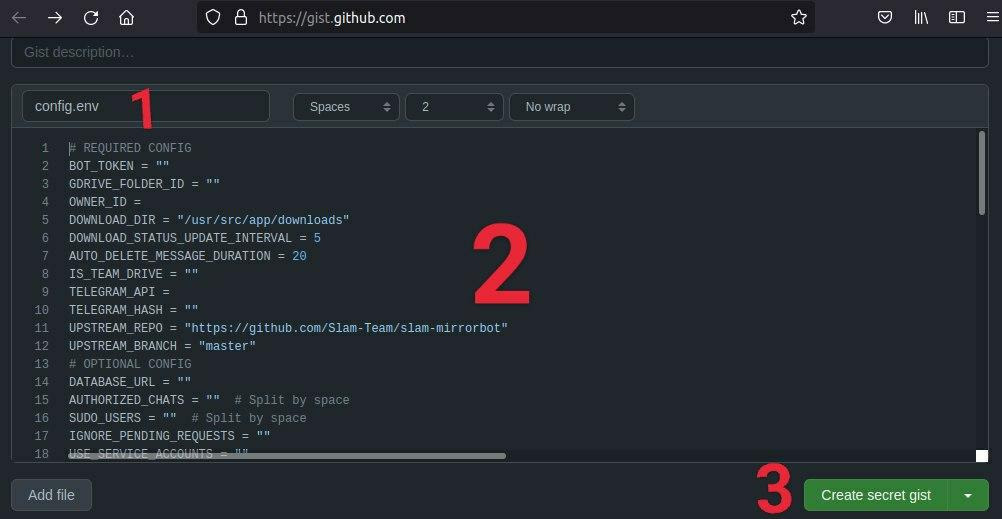Check Upstream branch for more info
Heroku Deploy
Important Notes
- Generate all your private files from master branch (token.pickle, config.env, drive_folder, cookies.txt, accounts, .netrc) since the generators not available in heroku branch but you should add the private files in heroku branch not in master or use variables links in
config.env. - Don’t add variables in heroku Environment, you can only add
CONFIG_FILE_URL. - Don’t deploy using hmanager or github integration.
- To avoid idling fill
BASE_URL_OF_BOTor you can use corn-job to ping your Heroku app. - If you want to edit anything in code, so u should edit h-code branch. After that u should add fill
UPSTREAM_REPOof your fork and leaveUPSTREAM_BRANCHempty since it’s by defaulth-code. - This branch use megasdkrest and latest version of qBittorrent.
Deploy With CLI
- Clone this repo:
git clone https://github.com/anasty17/mirror-leech-telegram-bot mirrorbot/ && cd mirrorbot
- Switch to heroku branch
- NOTE: Don’t commit changes in master branch. If you have committed your changes in master branch and after that you switched to heroku branch, the new added files(private files) will
NOTappear in heroku branch.
- NOTE: Don’t commit changes in master branch. If you have committed your changes in master branch and after that you switched to heroku branch, the new added files(private files) will
git checkout heroku
- After adding your private files
git add . -f
- Commit your changes
git commit -m token
- Login to heroku
heroku login
- Create heroku app
heroku create --region us YOURAPPNAME
- Add remote
heroku git:remote -a YOURAPPNAME
- Create container
heroku stack:set container
- Push to heroku
git push heroku heroku:master -f
Extras
- To create heroku-postgresql database
heroku addons:create heroku-postgresql
- To delete the app
heroku apps:destroy YOURAPPNAME
- To restart dyno
heroku restart
- To turn off dyno
heroku ps:scale web=0
- To turn on dyno
heroku ps:scale web=1
- To set heroku variable
heroku config:set VARNAME=VARTEXT
- To get live logs
heroku logs -t
Deploy With Github Workflow
- Go to Repository Settings -> Secrets
-
Add the below Required Variables one by one by clicking New Repository Secret every time.
- HEROKU_EMAIL: Heroku Account Email Id in which the above app will be deployed
- HEROKU_API_KEY: Your Heroku API key, get it from https://dashboard.heroku.com/account
- HEROKU_APP_NAME: Your Heroku app name, Name Must be unique
- CONFIG_FILE_URL: Copy This in any text editor.Remove the REMOVE_THIS_LINE=True line and fill the variables. For details about config you can see Here. Go to https://gist.github.com and paste your config data. Rename the file to config.env then create secret gist. Click on Raw, copy the link. This will be your CONFIG_FILE_URL. Refer to below images for clarity.
-
Remove commit id from raw link to be able to change variables without updating the CONFIG_FILE_URL in secrets. Should be in this form: https://gist.githubusercontent.com/username/gist-id/raw/config.env
-
Add all your private files in this branch or use variables links in
config.env. -
After adding all the above Required Variables go to Github Actions tab in your repository.
- Select Manually Deploy to Heroku workflow as shown below:
- Choose
herokubranch and click on Run workflow








